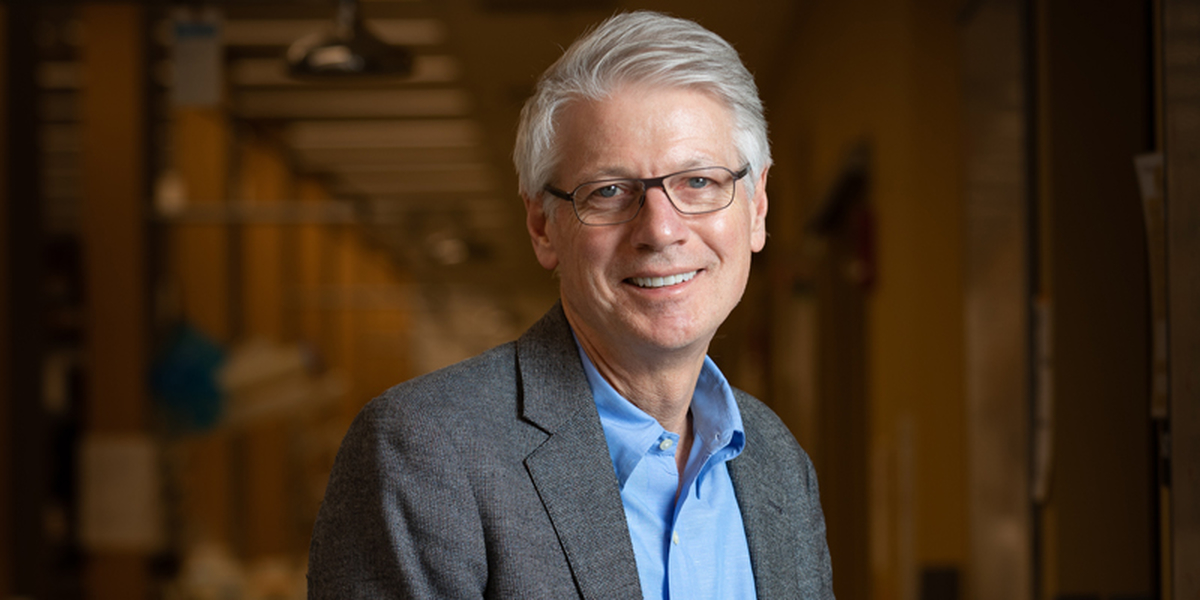
It’s not every day a basic scientist gets to see lives saved by their work. R. Scott McIvor, professor of Genetics, Cell Biology, and Development, has done so recently — as 10 infants were given the ability to make a key protein, thanks to an innovative gene engineering approach he and colleagues developed over the past decade.
The protein, known as Artemis, is critical for making B-cells and T-cells, workhorses of the human immune system. Babies born without a functional gene that codes for Artemis suffer from immune deficiency, so their bodies can’t defend themselves from infections. The condition, Artemis-deficient severe combined immunodeficiency (ART-SCID), can be treated by infusing stem cells from healthy individuals, but that brings the risks of transplant rejection along with other challenges such as graft-vs-host disease.
Now, thanks to the approach that McIvor and colleagues developed, babies born with ART-SCID have a better chance. In December, University of California, San Francisco clinical researchers reported in the New England Journal of Medicine that they were able to use a viral vector McIvor and team developed to correct the deficiency using the babies’ own bone marrow cells, giving them the ability to make the missing molecule.
“Ten patients with immune restoration — it was very gratifying for me to see that result,” McIvor says.
Modifying viruses to serve as couriers carrying genes into cells is nothing new. The big challenge in this instance was developing a viral vector that gave cells the ability to make just the right amount of Artemis.
To restore gene function, a viral vector needs to add not only the needed gene into the target cell, but also a stretch of genetic material known as a promoter that regulates expression of the gene. When they first developed the viral vector, McIvor and team used an off-the-shelf promoter that caused the gene to make so much Artemis that it started acting non-specifically and compromising cell survival. By substituting in Artemis’s own promoter, McIvor and team were eventually able to moderate its expression and so approximate a healthy level of function.
“We found that if you overexpressed Artemis it was cytoxic,” McIvor says. “So we went after the natural promoter to give a more toned-down, natural level of expression. We found when we tested the Artemis promoter in an experimental animal model, it worked best.”
A longtime friendship moved the approach from the bench to the bedside. As a biochemistry and biophysics postdoc at the University of California, San Francisco in the 1980s, McIvor had met a young physician, Dr. Mort Cowan, with a special interest and expertise in pediatric immunology. Over the years the two would meet at professional conferences, and eventually broached the idea of working together to move McIvor’s gene correction technique into clinical trials.
“I’m good at genetic engineering and animal work, but I need a physician to collaborate with,” McIvor says. “Mort’s the one who has the clinical expertise and familiarity with the disease.”
McIvor and colleagues assembled the lentiviral vector and shipped it to California. There, Cowan arranged for vector manufacturing and hematopoietic stem cell processing for use in human subjects. Eventually, Cowan was able to use the vector to successfully insert the Artemis gene into bone marrow stem cells temporarily removed from the patients, then reinfused.
As satisfying as this achievement is, McIvor is not resting. The approach has a few limitations, including the fact that the virus inserts the Artemis gene randomly into the target cell’s DNA — and if it inserts at the wrong place, it can activate nearby genes that could lead to the development of cancer.
If the patient’s own Artemis gene could be repaired by using precise CRISPR gene editing technology, that complication would be avoided. So McIvor is now teaming up with gene editing experts Drs. Branden Moriarity and Beau Webber in the Medical School and Center for Human Engineering to develop CRISPR techniques to modify the Artemis gene for re-infusion into patients and to restore immunity.
“That’s the future, and that’s what we’re working on right now,” he says. “You’ll have a much improved safety profile with that, and you’ll get exactly the right level of expression at exactly the right time.”
— Mary Hoff